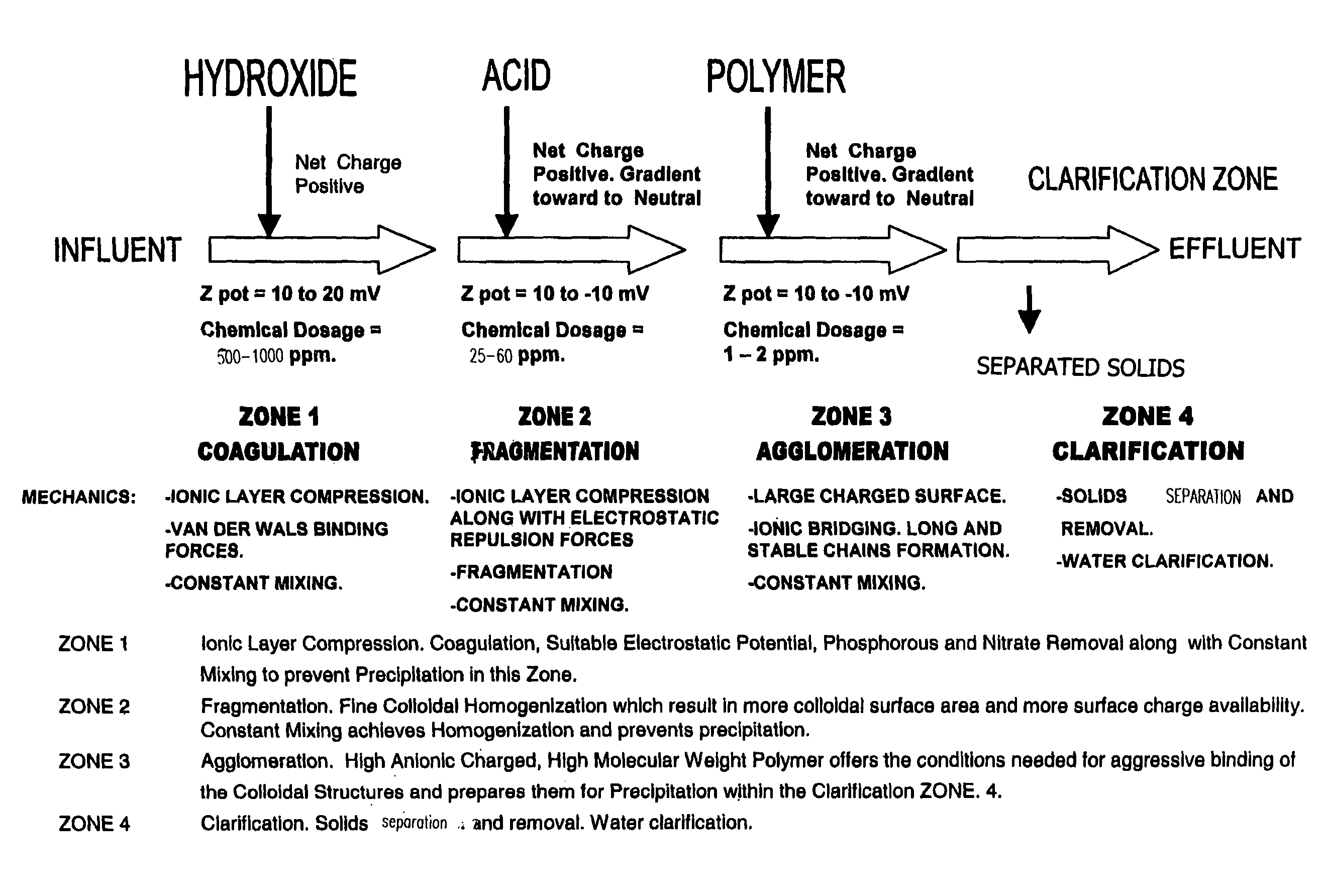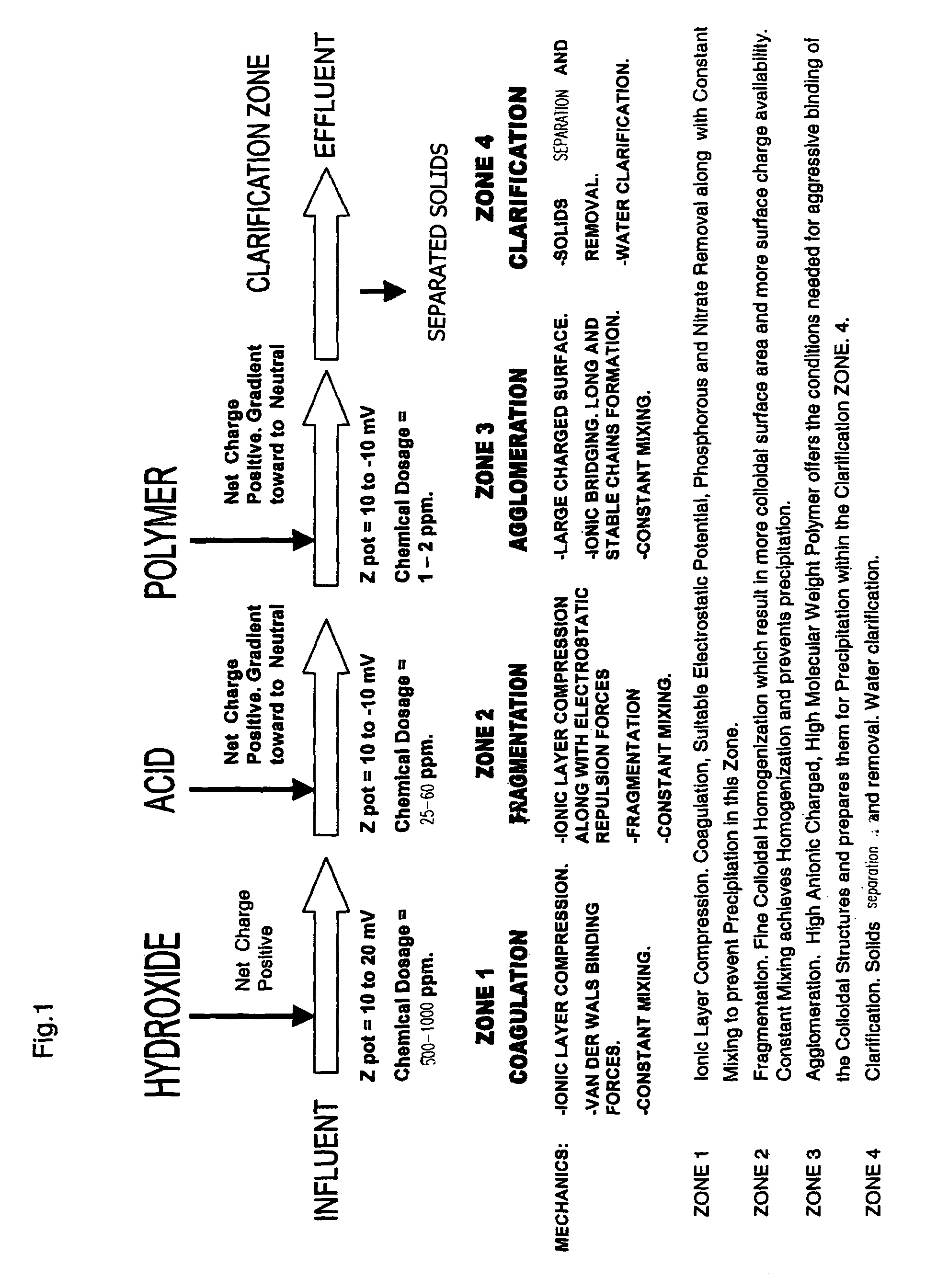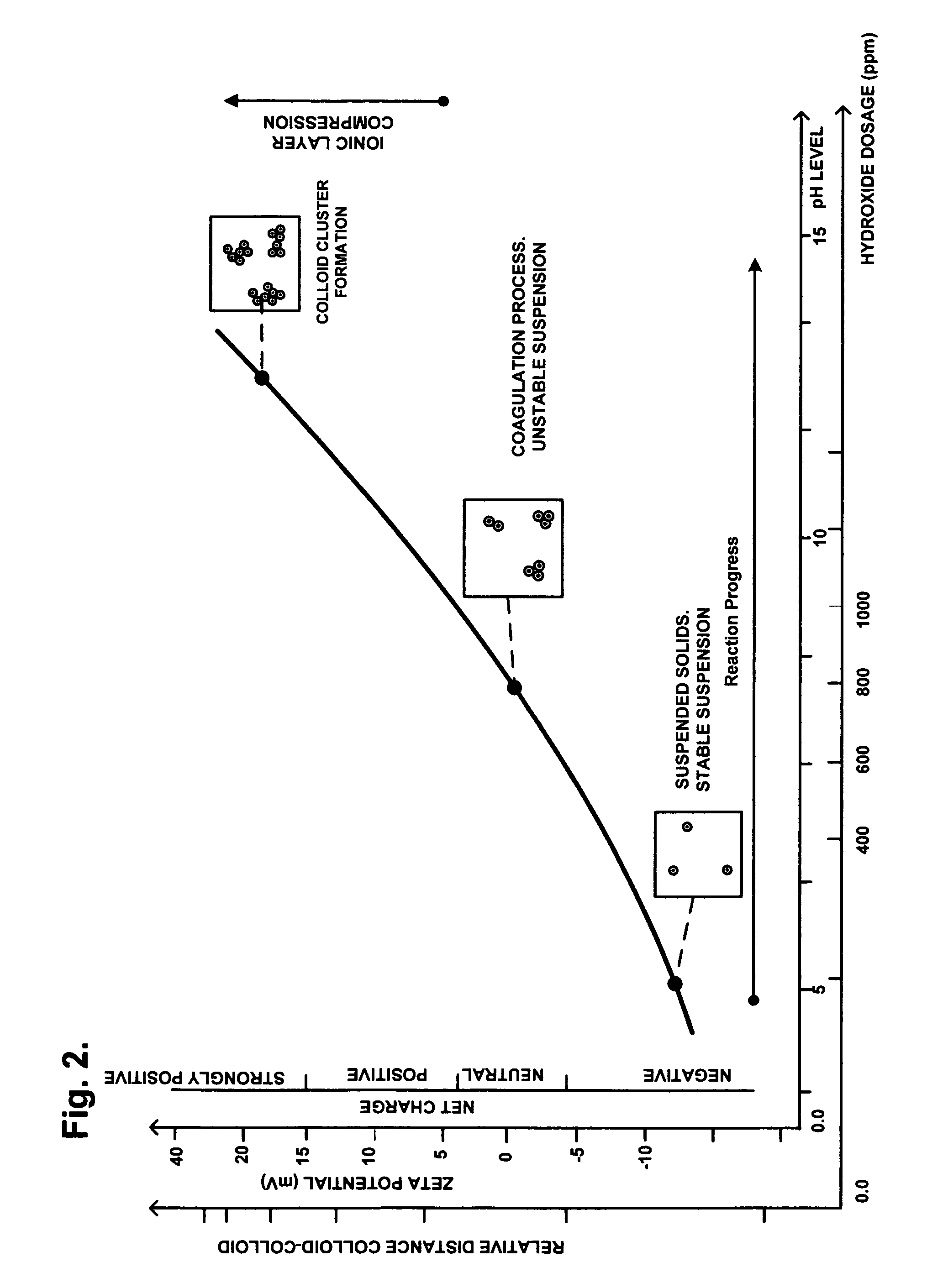Process for conditioning an aqueous solution for efficient colloidal precipitation
a technology of aqueous solution and colloidal precipitation, which is applied in the field of conditioning an aqueous solution for, can solve the problems of aqueous solution containing suspended colloids, turbidity and dispersion of coagulation, and unstable reaction,
- Summary
- Abstract
- Description
- Claims
- Application Information
AI Technical Summary
Benefits of technology
Problems solved by technology
Method used
Image
Examples
example
The Treating of Winery “Crush Process” Wastewater with the Present Invention
[0096]Referring to FIG. 6, wastewater discharge from the grape “crush process” contains grape peel, re-used process water containing concentrated organic material, detergent and equipment cleaning chemicals that are used during cleaning processes. Winery wastewater discharge typically has BOD and COD readings ranging substantially between 1000 and 10,000 mg / L.
[0097]Winery “Crush Process” wastewater stream is screened (S-1) for the removal from the waste stream of particulates that are over 0.25 inches and matter that settles out quickly. The remaining wastewater stream is then pumped from the screening zone by P-1 through line 1 and delivered to Reactor Vessel #1. The wastewater stream is discharged into Reactor Vessel #1 and is mixed constantly with Mechanical Mixer #1 so as to retain in suspension and uniformly mixed, substantially all of the particulates contained in the treatable wastewater stream.
[0098]...
PUM
| Property | Measurement | Unit |
|---|---|---|
| Zeta potential | aaaaa | aaaaa |
| Zeta potential | aaaaa | aaaaa |
| Zeta potential | aaaaa | aaaaa |
Abstract
Description
Claims
Application Information
 Login to View More
Login to View More - R&D
- Intellectual Property
- Life Sciences
- Materials
- Tech Scout
- Unparalleled Data Quality
- Higher Quality Content
- 60% Fewer Hallucinations
Browse by: Latest US Patents, China's latest patents, Technical Efficacy Thesaurus, Application Domain, Technology Topic, Popular Technical Reports.
© 2025 PatSnap. All rights reserved.Legal|Privacy policy|Modern Slavery Act Transparency Statement|Sitemap|About US| Contact US: help@patsnap.com



